Content [show]
Agriculture in Kazakhstan is one of the most developed sectors of the state economy. In each of the individual regions, conditions are favorable for the cultivation of certain crops. Particular attention is paid to animal husbandry.
Geography and climate
The territory of Kazakhstan is located simultaneously in Central Asia and in Eastern Europe, washed by the Caspian and Aral seas. The continental climate conditions cold winters with little snow and hot dry summers.
About half of the country's territory is deserts and semi-deserts. The western part has mountain ranges. As for water resources, there is a shortage of them due to geographical location. Seven large river arteries and 13 large reservoirs serve as sources of life-giving moisture.  Speaking of vegetation, it should be noted that steppe plants such as feather grass, wormwood and drought-resistant shrubs predominate. Green alpine meadows are found in the highlands. As for forests, they occupy 5.4% of the territory and are concentrated mainly in the north and south of the country.
Speaking of vegetation, it should be noted that steppe plants such as feather grass, wormwood and drought-resistant shrubs predominate. Green alpine meadows are found in the highlands. As for forests, they occupy 5.4% of the territory and are concentrated mainly in the north and south of the country.
Soils are perhaps the most important for agriculture. A significant share falls precisely on chernozems, chestnut and brown soils. There are also gray soils and brown soils.
How the industry developed
It is advisable to consider the development of agriculture in Kazakhstan since the 50s. In view of the economic crisis, the Soviet authorities decided to expand the cultivated areas. Then, virgin lands were actively developed in Kazakhstan and a number of other republics. It is worth noting that it was necessary to develop those areas that were characterized by low moisture content and a tendency to erosion.
It should be noted that the development of virgin lands led to a record grain harvest. At the same time, a sharp decrease in pasture areas was a negative consequence. To prevent a crisis in animal husbandry, specialized collective farms were obliged to increase the number of livestock. The Soviet period in the development of agriculture was also marked by the reform of machine and tractor stations.
In the 60-80s, the most intensive development of agriculture was observed. Cooperative ownership was completely transformed into state ownership, which made it possible to strengthen control over the movement of funds. This led to the fact that many farmers chose to leave the village. The government made a decision to attract specialists from other republics, as well as to use urgent servicemen.
At the moment, almost all agricultural land is in private hands. And, as in the late 70s, the problem of providing the population with meat and dairy products is quite acute, which indicates the need for reforms.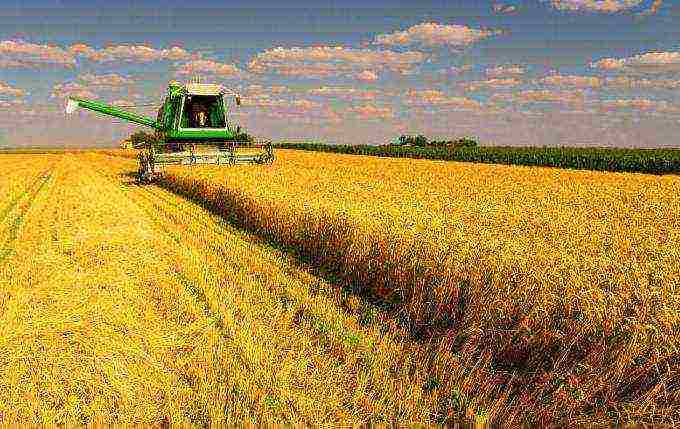
Industry characteristics
Agriculture in Kazakhstan is characterized by the following distinctive features:
- there is a pronounced zoning (horizontal and vertical) of soil covers;
- more than half of all land suitable for cultivation is in the desert and semi-desert zones;
- 85% of agricultural land is allocated for pastures (this is about 189 million hectares);
- Kazakhstan is one of the ten largest exporters of wheat and flour;
- the largest share of cultivated crops falls on cereals, fruits and berries, oilseeds, as well as cotton;
- in Kazakhstan, the livestock industry is traditionally developed, as well as the production of leather and wool.
The place of agriculture in the economy of Kazakhstan
Agriculture in Kazakhstan is one of the fundamental sectors of the state economy. It is worth noting that it brings 38% of the total national income annually. At the same time, about 16% of the state's workforce is employed in this area. This is due to the high level of mechanization and automation. It should be noted that there are more than 31,000 agricultural enterprises operating in the country, as well as about 32,000 peasant farms.
It should be noted that the agriculture of Kazakhstan ranks second in the world in the production of grain crops with an indicator of 967 kilograms per capita (leading positions belong to Canada, where this figure is 1,168 kg). At the same time, it is the only post-Soviet republic that is engaged in the export of bread. Nevertheless, the yield and productivity of such an industry as animal husbandry in Kazakhstan is quite low (paradoxically). According to this indicator, the state ranks 142nd in the world.
Sectors of agriculture in Kazakhstan
The agricultural sector is the strongest mechanism that provides not only the internal resources of the state, but also its position in the external market. Agriculture of the Republic of Kazakhstan is traditionally represented by two main sectors:
- Livestock - is developing in such areas as the breeding of cattle (meat and dairy production), sheep, horses, camels, pigs and goats. Poultry farms account for a significant share. A separate, albeit insignificant, niche is the cultivation and commercial fishing of fish.
- Crop production is the backbone of Kazakhstan's agriculture. The largest share is occupied by spring wheat, which is sold not only in the domestic but also in the foreign market. Also worth noting is the prevalence of crops such as rice, buckwheat, barley, oats, millet and corn. Significant sown areas are allocated for sugar beets and oilseeds (sunflower, rapeseed). Cotton and flax are grown for the textile industry. Also worth noting are crops such as potatoes, apples, melons and grapes.
Agriculture of South Kazakhstan
It is worth noting the diversity of natural and climatic conditions in the republic. Thus, the agriculture of South Kazakhstan operates in conditions of high air temperature in the foothill zone. With a good organization of artificial irrigation, it is possible to achieve high rates of harvesting of cotton, rice, sugar beet and tobacco. It is also worth noting that this is the most favorable place for the development of horticulture and viticulture.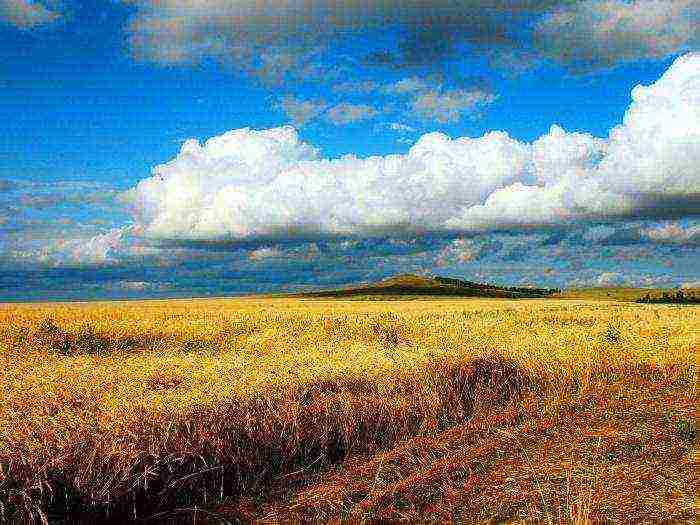
Features of agriculture in the western part of Kazakhstan
Agriculture of Western Kazakhstan is represented mainly by animal husbandry, which is due to large areas of pastures and meadows. The largest share falls on the breeding of sheep, horses and camels. If we talk about crops, then more than 70% of arable land is allocated for wheat. The rest of the area is occupied by barley, millet and rye.
Agriculture in the northern part of Kazakhstan
The agriculture of Northern Kazakhstan is developing rapidly under the influence of favorable climatic conditions. Here, meat and dairy cattle breeding, as well as bird breeding, are most developed. The main industry is sheep breeding.Agricultural fields are occupied by cotton and grain crops. Also, there are very favorable conditions for growing vegetables, fruits and melons.
Features of agriculture in East Kazakhstan
Agriculture of East Kazakhstan is represented mainly by non-irrigated agriculture. The largest land areas are occupied by sunflower crops. In the river valleys, there are significant fields of wheat, oats, peas, and vegetable crops. It is also worth noting the rapid development of meat and dairy farming. In some areas, irrigated viticulture is developed. Also, great attention is paid to the breeding of pigs and horses. The West of Kazakhstan is characterized by developed beekeeping, fur trade and beekeeping.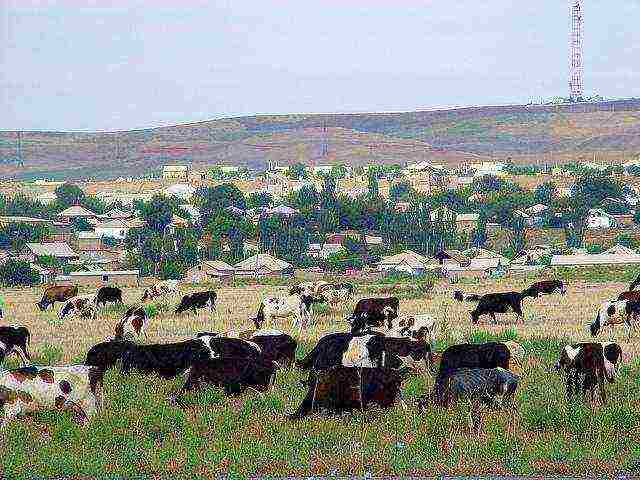
State policy in the field of agriculture
The development of agriculture in Kazakhstan is carried out with the support of the authorities. State regulation and reform is aimed at implementing the following main ideas:
- increasing entrepreneurial activity of the population of rural areas, as well as increasing their level of well-being;
- providing residents of agricultural regions with electricity, gas, drinking water and other vital resources;
- construction and overhaul of roads in rural areas;
- modernization of telecommunication systems;
- strengthening health care measures in rural areas (construction or overhaul of hospitals, attracting appropriate specialists);
- reforming education in schools and other educational institutions;
- providing villagers with access to cultural and sports programs;
- improving the level of security in villages by increasing the number of police stations, as well as units of the Ministry of Emergency Situations;
- ensuring environmental safety in rural areas;
- development of policy mechanisms in the field of internal migration in order to reduce the outflow of the population from agrarian regions.
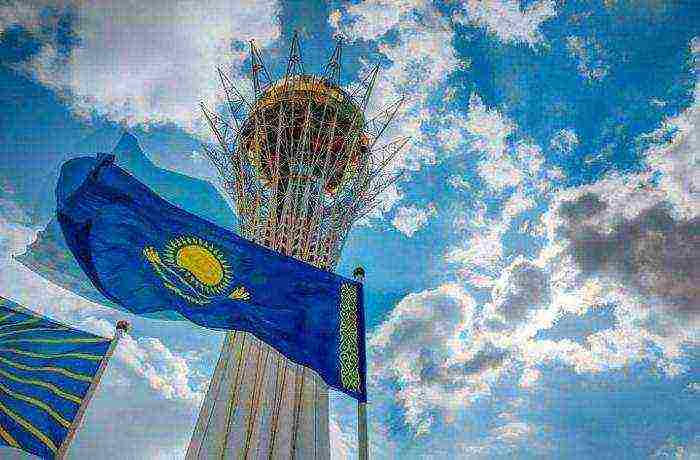
Industry development problems
The following main problems of agriculture in Kazakhstan can be identified:
- insufficient receipt of tax payments to the budget, which is associated with the difficulties of transition from the old state farm form to the modern farm form;
- insufficient amount of financial injections into the industry;
- the deplorable state of the dairy industry (the most vivid illustration of the problem is the forced purchase of products in neighboring Kyrgyzstan);
- the need to increase the livestock population to increase the export of meat products to neighboring countries;
- lack of storage space for crops (the area of elevators must be expanded at least twice to ensure the safety of the crop);
- migration of the population to cities due to the underdevelopment of villages and villages (the population who works in the agricultural sector, basically, does not have the appropriate education and qualifications);
- growth in imports of agricultural products;
- outdated material and technical base;
- insufficient level of development of local science in the field of agriculture.
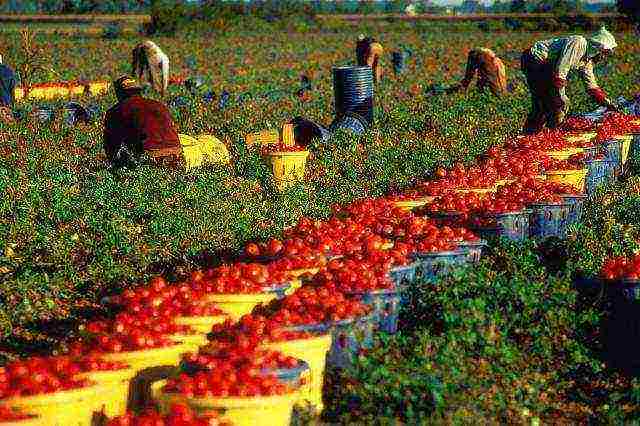
conclusions
Based on the foregoing, it can be concluded that there is some stagnation in such an industry as agriculture in Kazakhstan. Briefly, the situation can be described as irrational and incomplete use of natural and human resources, as well as insufficient financing of the agricultural sector. The climate and natural resources of Kazakhstan contribute to the development of animal husbandry, as well as the cultivation of grain crops. Thanks to the policy of virgin lands development, which was carried out during the Soviet period, the presence of significant areas of arable land is noted, which provides Kazakhstan with a leading position in the world grain market.
It is worth noting the exceptional importance of agriculture for the economy of Kazakhstan. This industry accounts for almost 40% of the national income of the state.Considering that less than 20% of the economically active population is employed in this sector, we can talk about a high level of production automation. Despite the existing problems with the yield indicator, the country managed to become the second largest grain exporter in the world. It is the only republic in the post-Soviet space that has the ability to sell grain abroad.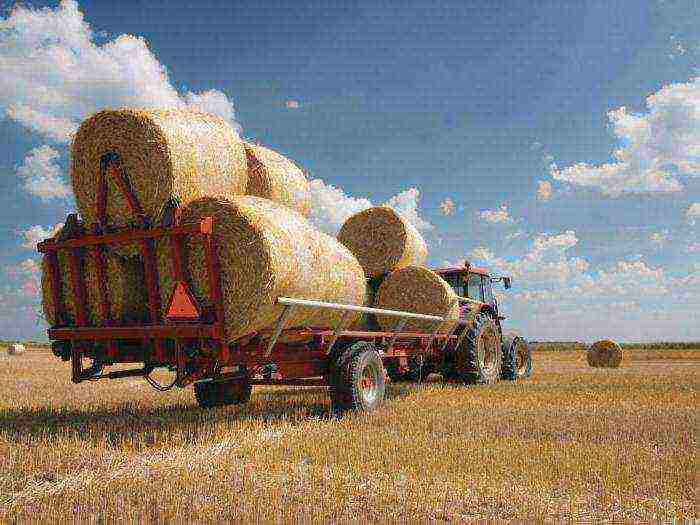
Despite the fact that agriculture is assigned a fundamental role in the economy of Kazakhstan, it has some inherent problems. One of the main difficulties is the incomplete transition to the modern farming form, which makes it difficult to control the payment of taxes. It is also worth noting the lack of investment in the industry. The greatest stagnation is observed in the meat and dairy industry, which leads to the forced import of these products to meet consumer demand. Another key problem that requires an immediate solution is the lack of storage space for the harvested crop.
Category: Kazakhstan
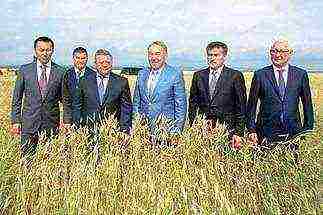
Cereals, fodder and industrial crops are grown: wheat, sunflower, flax, cotton. Fruit growing, melon growing and cannabis growing are also quite well developed.
Meat and wool sheep breeding, as well as meat and meat and dairy cattle breeding are developed from the branches of animal husbandry. Camels, kulans and horses are also bred in the country.
Agriculture is an important sector of the economy of Kazakhstan. In the north of the country, climatic conditions make it possible to grow spring wheat, oats, barley and other grain crops.
Vegetable growing, melon growing is developed here, such industrial crops as sunflower, flax, tobacco, etc. are grown.
In the south of the country, in the foothills and in the river valleys, cotton, yellow tobacco, rice, sugar beets are grown, orchards and vineyards bear fruit. Kazakhstan ranks third in the CIS in grain production. The natural conditions of the country provide excellent opportunities for the development of animal husbandry. The country is traditionally engaged in sheep breeding, horse breeding, camel breeding, cattle breeding. In the central and southwestern parts of the country, desert and semi-desert areas are used as seasonal pastures for livestock. Mountain meadows in the east and southeast of the republic are used as summer pastures.
Kazakhstan is distinguished by steppe expanses and mountainous areas. The steppe parts of the country are suitable for growing cereals. The development of these spaces began in the middle of the 20th century. Now Kazakhstan grows large objects of wheat, which is exported to other countries.
Where is wheat grown the least?
To understand in which of the regions of Kazakhstan the least wheat is grown, it is necessary to determine the climatic features of certain regions of the country:
- Priaralye. This is a large region of Kazakhstan, located close to the Aral Sea. The drying up of the sea, a significant decrease in its level, led to land desertification. The level of humidity has decreased, the amount of sand has increased. Therefore, the Aral Sea region is completely unsuitable for growing wheat;
- Karakalpakstan. This region has autonomy, since it is home to a separate ethnic group - the Karakalpaks. This region is characterized by a desert climate. There are cold, harsh winters and hot summer months. There is little vegetation in Karakalpakstan, and the soils are poor in nutrients. Therefore, very little wheat is grown there;
- in general, the southern regions of Kazakhstan are distinguished by an arid climate. In fact, these are deserts that are of little use for growing crops, in particular wheat.
For these reasons, the cultivation of grain is especially developed in the northern and central regions of Kazakhstan.And wheat is least of all grown in the Aral Sea region, Karakalpakstan and southern regions in general.
What else is grown in Kazakhstan
The soils in Kazakhstan were virgin lands several decades ago. That is, no one has ever plowed them. The development of virgin lands gave a large amount of arable land. Now they are being cultivated, irrigated. Kazakhstan grows not only wheat, but also rye, barley, oats.
The country provides its own needs for cereals. At the same time, crops are grown that are suitable for making animal feed and for baking bread.
In addition to cereals, legumes, peas and other agricultural crops are grown.
1 comment
Agriculture is one of the key sectors of the economy of Kazakhstan. In the north of the country, climatic conditions favor the cultivation of spring wheat, oats, barley and other grain crops, and also allow the development of vegetable growing, melon growing and the cultivation of a number of industrial crops - sunflower, flax, tobacco, etc. In the south of the republic, in the foothills and in river valleys, where there is a lot of heat, with artificial irrigation, cotton, sugar beet, yellow tobacco, rice give high yields; orchards and vineyards bear fruit. Natural conditions of Kazakhstan, their diversity determine significant potential for the development of animal husbandry. The republic is traditionally engaged in sheep breeding, horse breeding, camel breeding, cattle breeding. Desert and semi-desert areas in the central and southwestern parts of Kazakhstan are widely used as seasonal pastures for livestock. Mountain meadows in the east and southeast of the republic are used as summer pastures. As one of the priority directions of development of the republic's economy, agriculture has a huge potential and large reserves. The agricultural sector of Kazakhstan has the following characteristics:
- the horizontal and vertical zoning of soil and vegetation cover is sharply expressed. In the forest-steppe and steppe zones there are 10% of all lands, in the semi-desert and desert - about 60%, in the mountainous areas - about 5%. All agricultural zones of the country are characterized by low annual precipitation - 150–320 mm;
- the total area of agricultural land - 222.6 million hectares, of which 24 million hectares are under arable land (10.8%), hayfields - 5 million hectares (2.2%), pastures - 189 million hectares ( 85%);
- the northern regions specialize in the cultivation of grain crops and animal husbandry; southern regions, where irrigation is essential, have a large diversification of cultivated crops (cereals, oilseeds, fruit and berry crops, vegetables, cotton);
- Kazakhstan is a large exporter of wheat and flour (one of the ten world exporters), cotton (15%), leather and wool (25%) also have a significant share in the country's total agricultural exports;
- the livestock industry is traditional for Kazakhstan.
In order to boost the rural economy, over the past ten years, state and sectoral programs have been adopted to develop and support the agro-industrial complex (AIC) and rural areas, supported by solid financial resources. In addition, in order to improve the system of state support for the industry, the National Holding "KazAgro" was created in 2006, which includes: JSC "National Company Food Contract Corporation", JSC "Mal onimderi corporations", JSC "KazAgroFinance", JSC "Agrarian Credit Corporation", JSC "Fund for Financial Support of Agriculture", JSC "KazAgroGarant", JSC "Kazagromarketing".
The holding's activities cover the implementation of state policy in the field of food security, lending, insurance of agricultural enterprises, development of agricultural markets, rural development, etc. horizontal and vertical relationships and production cycles in the agro-industrial complex.At the present stage, the development of export of products and the corresponding infrastructure, regulation and stabilization of the republic's domestic food markets are of great importance. In the field of investment policy, a strategically significant task is to develop sources of financing for the agro-industrial complex, the market for domestic and foreign capital, a system of guaranteeing obligations to creditors and, in general, expanding instruments for financing the agro-industrial complex, since the state budget is still the main source. Also, measures are being taken to develop rural entrepreneurship, a system of providing modern financial services to the rural population, including with the participation of commercial entities of the financial market. For Kazakhstan, striving to develop export orientation of agricultural production, the development of agricultural production and service infrastructure is of great importance. This task is associated with increasing the level of technical equipment of the agro-industrial complex, introducing modern technologies for processing agricultural products, leasing machinery and equipment, stimulating the amalgamation of small agricultural producers, developing a full cycle of production of finished agricultural products, developing non-agricultural business in the countryside, as well as institutional development of the system of rural credit and consumer associations and cooperatives. In addition, taking into account foreign experience in the development of competitive agriculture, it is planned to: stimulate the development of the insurance system in crop production; ensuring wide access of subjects of the agro-industrial complex to exhibition and fair events; creation of a network of information and consultation points in rural areas. Within the framework of strategic programs of the state in the agro-industrial complex of the country, projects are being implemented to develop clusters, in particular, cotton, fruit and vegetable, processing of crop and poultry products. Including with the support of the state and with the participation of private investors, projects are being implemented to develop a network of vegetable stores, greenhouses, poultry farms, and the construction of factories for deep processing of grain and cotton. Currently, the agro-industrial complex of the country has been tasked with expanding and filling exports, diversifying product markets. This will make it possible to use the advantages of agriculture in the period of expanding demand for quality food in the world market. To achieve this goal, it is planned to build new grain terminals in foreign ports - in Iran and the Black Sea, as well as on the border with China - and expand the capacity of the terminal in the port of Aktau.
In addition, the state provides support for the innovative development of agriculture, its scientific and technical, engineering and technical support. For this purpose, the company "KazAgroInnovation" was created, uniting scientific research organizations of agricultural profile, including in the field of grain farming, animal husbandry, food industry, forestry, agriculture, crop production, fisheries, agricultural mechanization, agro-industrial complex economy. Combining the scientific and production potential of agricultural science makes it possible to increase the efficiency of the creation and commercialization of new agricultural technologies, the transfer of promising foreign agricultural technologies and their adaptation in domestic conditions. At the same time, the main priorities of agricultural science are based on the peculiarities of agriculture in Kazakhstan, its competitive advantages and industry specialization. Much attention is paid to the issues of environmental safety, preservation of the quality of manufactured products, reproduction of natural resources.Agricultural enterprises are also actively developing cooperative ties with each other, in particular, in 2005 the Association "Agrosoyuz of Kazakhstan" was created, uniting farms, public associations and organizations in the field of the agro-industrial complex. Members of the Association are both legal entities and their associations and unions, in particular the Union of Farmers, the Union of Poultry Farmers, the Grain Union of Kazakhstan, associations of peasant farms in the regions, etc. The activities of the Association are aimed at providing its members with advisory and legal assistance necessary to receive grants, loans, leasing of equipment, other support from the state, private financial organizations. This is possible due to extensive ties with both government agencies and large private agricultural companies.
As the agrarian potential of Kazakhstan develops, much attention is paid to improving the quality of the technical equipment of the agro-industrial complex. The factors determining the demand for modern machinery and means of agricultural mechanization are changes in production technology, progressive specialization and concentration of production in developing agriculture, the quantitative and qualitative state of equipping with agricultural equipment.
The livestock industry is traditional for Kazakhstan. For many centuries, domestic animals (horses, sheep, cows, camels) have been the basis of the "family economy" for Kazakhs. The state policy in the livestock sector, pursued in the Republic of Kazakhstan, ensures a stable growth in the number of livestock and poultry, an increase in their productivity, an increase in livestock production, and an improvement in herd reproduction.
Work is underway to further increase the production of competitive livestock products in order to ensure the country's food security and export supplies. It is planned to develop infrastructure for large-scale livestock farming, including: construction in the republic of special feeding grounds for cattle and sheep, a network of slaughterhouses, modern meat processing complexes; development of production and deep processing of wool and leather. These projects are supposed to be implemented within the framework of public-private partnerships with the participation of foreign investors. Another important direction in the development of the livestock industry is the expansion of the livestock breeding sector, based on an increase in the proportion of livestock breeding, the development of a specialized infrastructure, and the modernization of livestock farms. An increase in the number of breeding farms up to 500 units is forecasted. With the support of the KazAgro holding, financing and delivery of high-quality livestock are carried out. In general, it should be noted that the volume of investment in agriculture is increasing annually. In addition to budget allocations, the share of own funds of agricultural enterprises, borrowed funds and foreign investments is increasing. The state holding "KazAgro" is actively involved in these processes, attracting external and internal investment resources to the development of the agricultural potential of Kazakhstan, providing systematic state support for the development of a modern competitive agro-industrial complex in Kazakhstan.


